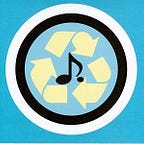Put Away Childish Things
10/16/94, Soldiers and Sailors Memorial Auditorium, Chattanooga, TN
Imagine you’re writing the blurb for an upcoming Phish concert in a newspaper, circa 1994. Drawn as music critics are towards the easy narrative, you’d probably foreground Phish’s reputation for goofiness: the vacuum cleaner, the giant beach balls, a capella songs and trampolines. Since it was too early for the “Grateful Dead’s heir” cliche, if your local music hack even got to the music, it would focus on Phish’s genre shapeshifting, plentiful covers, and maybe their proggy Zappa genetics.
For most of the shows I’ve listened to in 1993 and 1994, that hypothetical blurb does a pretty accurate job of anticipating reality. Aside from a few legendary anomalies, Phish mostly delivered what their press kit promised, providing most, if not all of the above features night in and night out. But imagine if you read that blurb and then attended a show like 11/2/94, 11/16/94, or 12/29/94, expecting a silly prop band and instead finding yourself assaulted by half an hour of mind-bending experimentation. You might write your local music critic a strongly-worded letter.
Phish have never entirely shed their humorous side, and bless ’em for it — you can’t help but appreciate a bunch of fiftysomethings chanting and re-enacting “golf cart marathons” at Madison Square Garden. But maturing improvisationally in the mid-90s required a little bit of growing up. Logistics alone demanded some pruning — if you’re going to spend 30 of your nightly 150 minutes on one song, you have to make some cuts elsewhere. But what the band chose for the chopping block offers some clues to their headspace as they went through one of their most significant evolutions.
10/16/94 doesn’t feature the final version of any songs, but the setlist does contain a couple on their deathbed: “The Landlady” and “Big Ball Jam.” Not counting its unlikely recent resurrection, this is the second-to-last “Landlady” without horns, and the last time it would occupy the set-opening position Phish toyed with in 1994. A couple songs later, there’s the third-to-last “Big Ball Jam,” that scourge of taper sections everywhere and a second-set staple since fall 92.
For “The Landlady,” I’ve blabbed before about the end of “Phish jazz”; in short, the subtleties of jazz just weren’t going to work any more as the band moved into larger and larger venues, while simultaneously the band was moving past traditional jazz rules of improvisation. By fall 94, “Landlady” stuck around largely so the band could check a genre box: yes, we can do jazz. It’s frequent pairing with “Poor Heart” at this time reinforced that tokenism: yes, we can do both jazz *and* country, and we can even segue them together for extra credit. Reviving PYITE and its Landlady interpolation accomplished the same thing, in a more interesting fashion.
“Big Ball Jam” also didn’t play as well in larger venues (pity poor Brad Sands and his ball retrieval duties), but more importantly, just wore out its schtick. The epitome of “fun in person, terrible on tape” never really grew beyond a few minutes of random noise, and its increasingly intermittent appearance in 1994 suggested the band was getting tired of the act.
To put it in a favorable light, the “song” did represent a noble effort to increase crowd participation, explicitly acting out the symbiotic relationship of Phish and their audience. Much like the secret language, it was not just a crowd-pleasing gimmick, but a test of fan knowledge — those who were paying attention could get one over on the newbies. But it’s also interesting that BBJ (and secret language, for that matter) start to disappear around the same time as fan-generated rituals, such as the “Stash” clapping or “Wilson” chant, begin to organically arise.
There’s one other casualty of Phish’s growing “maturity” that’s represented in this show not by a near-final appearance, but by its absence. We’re now nine shows into the fall ’94 tour, and on only three occasions so far (10/8/94 “Purple Rain,” 10/10/94 “Love You”, and 10/13/94 “I Didn’t Know”) has Fishman dragged out his Electrolux. By comparison, the first 9 shows of the spring/summer tour had 5 vacuum appearances, and the first nine shows of 1993 had…nine.
The gradual fading out of Fishman’s feature segment is perhaps the biggest adjustment of all. Not only does it start moving Phish away from their image of “that band with the guy in the dress who plays vacuum,” it opens up a lot of second-set real estate that used to be the domain of BBJ, HYHU, and a whole lot of sucking and blowing. Any momentum built up by early second set jamming didn’t have a chance against that lengthy bloc of hijinks, and to make any significant progress on set flow, it had to go…or at least become a lot less frequent.
Knowing how fanbases work, I’m sure there was a segment of people alienated by this transition — somewhere, some jaded vet talks about how Phish totally sold out when they stopped using speed skating workout equipment in the middle of “It’s Ice.” But some kind of yard sale had to take place (“3 giant inflatable balls for the price of 1!”) to take the next step forward, and the band happily stopped far short of going completely “straight.” Scaling back the funny-weird just opened up more room for the scary-weird, a change that would take fans, and the blurb writers of the world, a while to catch up with.
